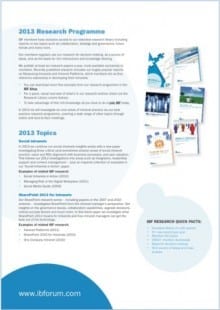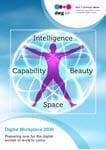Why we need to take a level-headed view of artificial intelligence

Over the past few months interest in artificial intelligence (AI) has reached fever pitch, with a surge in media coverage and AI increasingly appearing on the radar for many organizations. A look at Google Trends over the past five years confirms that interest is indeed now peaking, and respected analysts like Gartner are predicting that, by 2021, two fifths of all new applications used in the enterprise will include AI.
We know that many organizations are now actively experimenting with AI, and in the recent DWG survey, over half of all respondents said they were planning on introducing enterprise chatbots (often with AI capability) over the next 18 months. Moreover, AI-related products, such as the new Alexa for Business, are coming on the market.
But with the term now so prevalent, and AI potentially something which will impact all of us over the coming decades, it’s important that organizations start to take a sensible, level-headed view of it. As budget holders begin to make investment decisions, teams need to consider just what AI is, the value it will bring, and what needs to be done in order to ensure it has a successful impact.
What do we mean by AI?
With the term AI appearing so often, we need to consider what we actually mean by it. There isn’t necessarily a consensus about its meaning and, in practice, it has become an umbrella term for several different capabilities.
As a term, AI has been around since the 1950s and has a considerable heritage, including academic research in the field of computer science. As well as referring to a specific scientific discipline, Wikipedia’s definition of the term handily also details a more popular, “colloquial” definition:
“The term ‘artificial intelligence’ is applied when a machine mimics ‘cognitive’ functions that humans associate with other human minds such as ‘learning’ or ‘problem solving’.”
Applying this more popular definition means that AI can be linked to several emerging technologies and capabilities – a broad sweep, which has the potential to contribute to a lack of clear thinking.
For example, in the McKinsey Global Institute’s comprehensive research into AI, its discussion paper “Artificial intelligence: the next digital frontier” breaks AI down into several capabilities, albeit some of them overlapping:
- robots and autonomous vehicles
- computer vision (extracting data from images and videos)
- language (including natural language processes and speech recognition)
- virtual agents
- machine learning.
AI is a broad concept and the focus of interest for one organization may be very different in another.
Beware of the hype
It’s not only the wide scope of AI that has led to confusion. The “hype” around AI is also leading to muddied thinking. As DWG’s CEO Paul Miller predicts for 2018: “AI and the intelligent workplace will produce hype and reality in equal measures”. This is leading to over-inflated claims and a tendency to label every new piece of digital workplace technology as AI. Currently, the term AI sells.
AI can be a controversial and emotive subject. In the medium term, many think it will lead to job losses, although other experts think this threat is exaggerated. Others have deeper concerns about the long-term impact of AI on mankind, with Stephen Hawking even suggesting it “could spell the end of the human race”. Of course, this is a very serious issue, but at the moment your decision whether to introduce a chatbot with machine learning to improve an HR process is unlikely to contribute to humanity’s demise!
Another issue is that AI is developing very fast in its effectiveness, reach and impact. It is not sitting still. For example, when I consider my own experiences of speech recognition, the accuracy and ability for tools to adapt to my way of working have dramatically improved over the past two years. Considering how long organizations usually dither when making decisions about investing in technology, AI will change during that time, leading to possible misconceptions about its value. There may also come a point where an AI capability is so embedded and normalized that it is no longer regarded as AI, it’s just what machines do.
What organizations need to think about
There are some very exciting things happening with AI right now, and many teams are currently conducting pilots, carrying out experiments and forming relationships with vendors.
However, it is important not to be seduced by just the short-term possibilities of AI but also to consider what needs to be done in order to make AI successful and sustainable.
Teams need to be realistic and to realize that there is a considerable amount of potential foundational work that needs to be done to prepare the way to make AI and the “intelligent workplace” both scalable and workable at the enterprise level. Like any element of the digital workplace, teams need to consider:
- strategy and related roadmaps, and getting a consensus on the best way forward
- prioritization of specific use cases
- governance – processes, roles and standards
- the interface with the wider digital workplace
- the types of roles and skills that are needed to sustain AI’s success
- the fit with organizational culture
- the change management efforts needed to make it all happen.
A potential parallel can be made with enterprise search and the sort of ongoing investment in specialist skills that is needed for search to really work.
Getting AI into perspective
Artificial intelligence and its possibilities are genuinely exciting, but there’s a lot of noise out there. It’s a broad and emotive term with multiple capabilities and is currently over-hyped. A cool head is needed to assess the possibilities, stay clear of the inflated claims and be realistic about the commitment needed to make AI work.
It’s worth spending your time and researching AI. Getting AI into perspective will help you make sound investment decisions and ultimately mean it’s more likely to be successful in your organization.
RESEARCH AND RESOURCES
- Digital Workplace Impact podcast: What 7-year-olds need to learn now to thrive in an AI world of work
- FREE REPORT: Digital Workplace 2030: Preparing now for the digital worlds of work to come
- FREE EXECUTIVE SUMMARY: Evolving the employee mobile experience: Six key approaches for success
TAKE THE NEXT STEP
Digital Workplace
2030 Report
Categorised in: Digital workplace, Metrics & measurement


